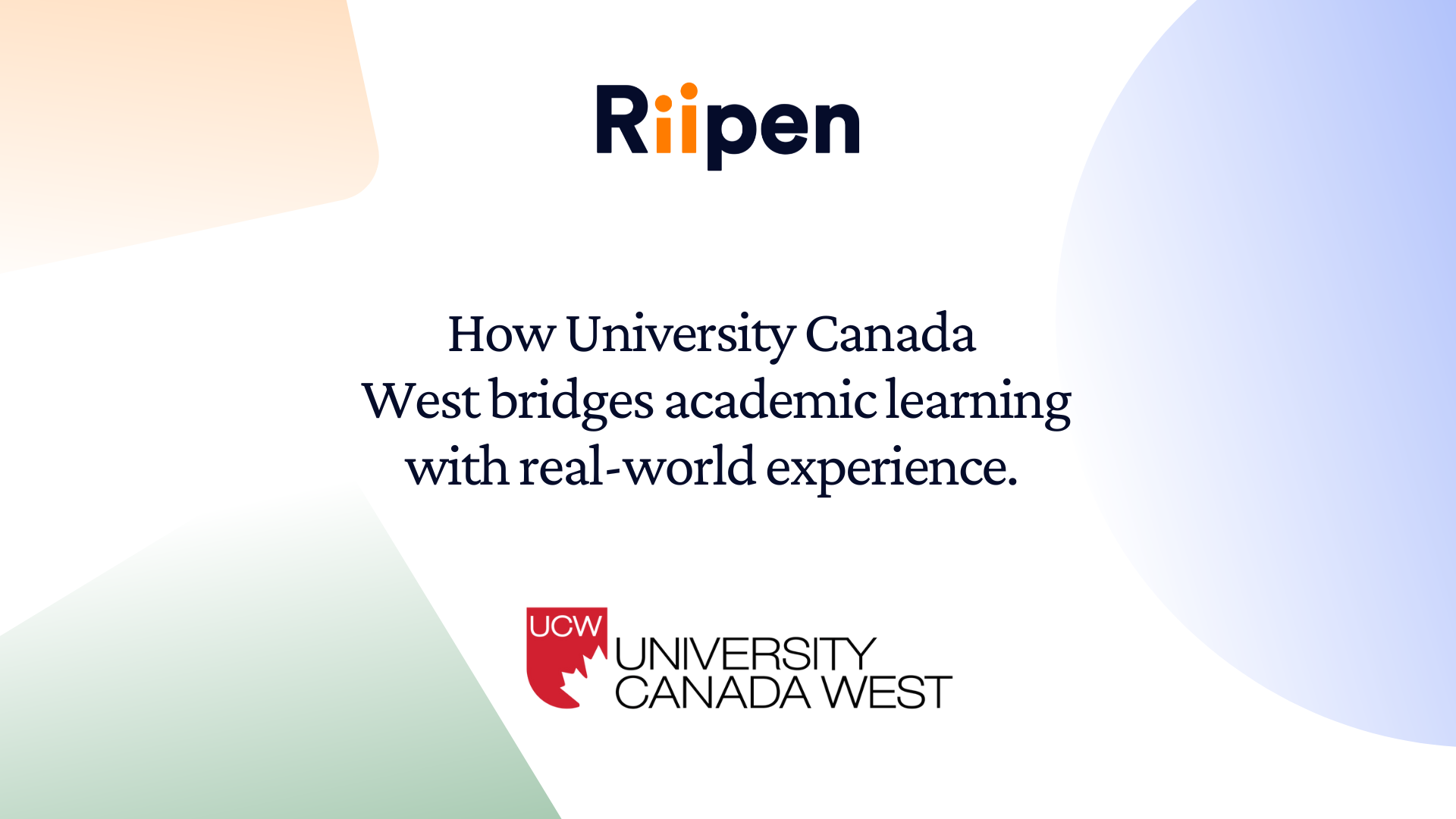What is work-integrated learning? Here's what employers, educators, and students need to know to succeed.
Explore work-integrated learning (aka work-based learning), its benefits, and trusted resources for next steps.

approach to career education and talent development, is gaining traction with employers, educators, and students. In this article, we’ll simplify work-integrated learning and get you up to speed on everything you need to know, including what it is, how it can benefit you, and where you can learn more about it.
What is work-integrated learning?
Work-integrated learning, or work-based learning (WBL), is an experiential educational approach that combines academic theory and practical applications to prepare students for the complex world of work. To put it simply, educators match their students with employers for hands-on, real-world projects that allow their students to practice the skills they’ve learned in the classroom. Examples of WIL include internships, co-op programs, service learning opportunities, and industry projects.
This form of learning is not a new concept. Students have apprenticed with master artisans for centuries to gain experience and improve their technical and durable skills. But with AI transforming the world of work, the experiential approach to career education is now taking center stage. In fact, the Business-Higher Education Forum (BHEF) launched its Work-Integrated Learning Innovation Center this year to help businesses and educators expand hands-on learning models that align education and workforce needs and prepare learners for high-demand careers.
Because of this shift in the workforce, it’s essential to understand not just what WIL is, but how it can benefit you as an employer, an educator, or a student.
Employers experience tangible benefits at no cost.
As an employer, why should you offer work-integrated learning experiences? For most, WIL provides fresh perspectives on real-world challenges for those looking for help with short-term projects in their business. If you lack the resources to hire full-time staff, WIL gives you access to talented students, giving students the opportunities to practice their skills and gain industry experience.
Plus, when you use Riipen's experiential learning platform, you can access this talent at no cost!
Riipen has seen students deliver tangible results for more than a decade. Fiona Wallace, President of Nutrition Opportunities Worldwide shares a positive experience she had with students she matched with through Riipen, "Not only have I met a lovely bunch of young, talented people, but I have also managed to grow my LinkedIn followers organically by almost 3000 people in the space of a few months. This has benefited my business by increasing brand awareness with key stakeholders, which resulted in a new contract of $25K that I do not think I would have obtained without my social media presence.”
Educators better prepare students for the world of work.
Academic institutions strive to equip students with the skills needed for success. However, limited class time and institutional resources often make it challenging for educators to provide ample opportunities for students to apply their learning. This is why many are turning to work-based learning as a valuable solution.
April Coe, a Work-Integrated Learning Coordinator at Northern Alberta Institute of Technology, firmly believes in the value of real-world experience. “It's important for students to put into practice what they’ve learned in the classroom,” she explained in an interview on the school’s Clean Energy program. “When you are working with hydrogen or any biofuel substance, it has unique properties so you need to learn each way to care and handle it because what we teach in class doesn't necessarily translate the same way to the real world. And when companies hire new employees, they want them to have some experience so they can hit the ground running.”
When institutions enable their students with hands-on experience, not only are the students better prepared to find a job, but the institution also benefits because students find more value in their programs. That was the case for the School of Continuing Studies at Georgetown University. “Our students appreciate that they are doing real work for real companies and are seeing a return on their investment,” said Jeffrey Warner, Senior Director, Professional Development & Certificates.
Students acquire experience that helps them find a job.
Like the classic chicken and egg dilemma, it’s hard to find a job with no experience, but it’s hard to get experience without a job. Work-integrated learning solves this dilemma. Students have the opportunity to work on real-world projects and practice their skills while they are still in school.
In the past, Riipen surveyed students who participated in work-integrated experiences on its platform. At the time, over 92% said they gained valuable experience that would help them in the workplace, and 68% said they received a job offer after completing the experience. One student, Liana, made such an impression while working at Mesh AI that she was hired full-time and is now the Chief of Customer Success.
Ready to get started?
Now that you have a better understanding of what work-integrated learning is and the many benefits it offers, you may be wondering how to take the first step toward implementing it. Best answer? Connect with us! Whether you're an educator, employer, or job seeker, create meaningful opportunities for growth, development, and success today.
Looking for more resources? Riipen is here to help you on your journey. From detailed next steps and best practices to real-life user stories, we're here to help you understand how WIL can support your hiring, educational, or job search goals.










.png)



















.png)







